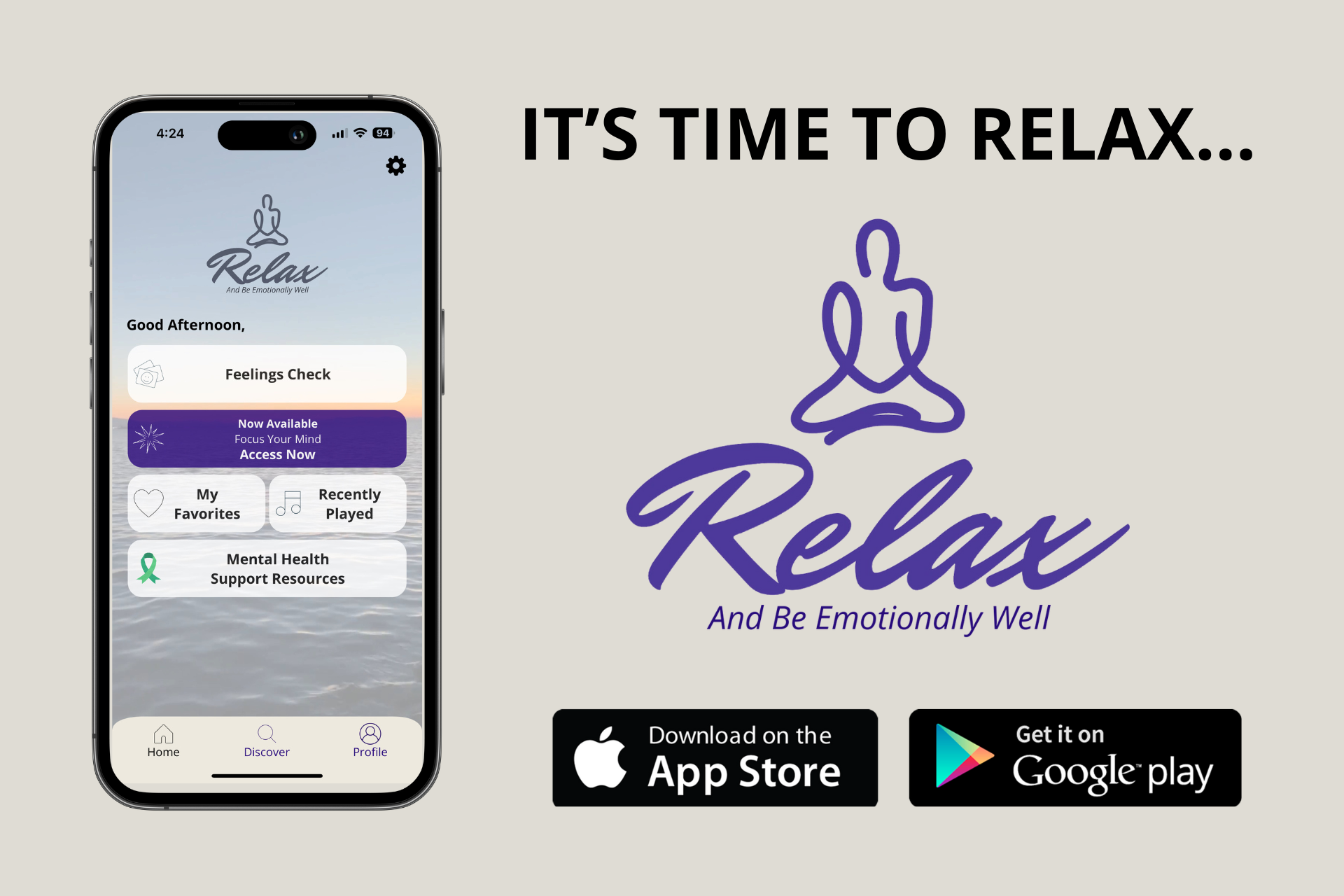
Image Source: AI Generated
In today’s fast-paced world, finding inner peace and balance has become a challenge for many. Guided meditation offers a powerful solution, providing a path to tranquility and self-discovery. This practice has gained popularity as an effective tool to reduce stress, improve sleep, and enhance overall well-being. From 10-minute sessions to longer guided visualizations, there’s a wide range of options available to suit different needs and schedules.
The benefits of guided meditation extend far beyond the meditation session itself. It has an impact on various aspects of life, from emotional regulation to cognitive function. This article explores the science behind guided meditation, techniques for stress relief, and its role in improving sleep quality. It also delves into how guided meditation can boost emotional well-being and transform one’s life over time. Whether you’re new to meditation or looking to deepen your practice, this guide offers insights to help you on your journey to inner calm and self-awareness.
The Science Behind Guided Meditation
Guided meditation has gained popularity as a powerful tool for reducing stress and improving overall well-being. Recent scientific research has shed light on how this practice affects the brain and body, providing evidence for its numerous benefits.
How meditation affects the brain
Studies have shown that guided meditation has a significant impact on brain structure and function. Researchers have found that regular meditation practice leads to changes in various brain regions associated with attention, emotion regulation, and self-awareness. For example, a study conducted by Dr. Sarah Lazar at Harvard University revealed that mindfulness training resulted in changes in two important brain structures: the hippocampus and the amygdala [1].
The hippocampus, which plays a crucial role in emotion control and memory storage, showed thickening in meditators. This change is associated with healthier memory consolidation. On the other hand, the amygdala, often referred to as the “smoke alarm” of the brain, displayed decreased gray matter. This reduction is linked to decreased sensitivity to potential threats, suggesting that meditation may help individuals better manage stress and anxiety [1].
Research on meditation’s health benefits
Numerous studies have explored the health benefits of guided meditation. One meta-analysis of 45 studies found that various forms of meditation can help decrease physiological markers of stress, such as increased cortisol levels and heart rate [2]. This reduction in stress has been shown to have wide-ranging impacts on sleep quality, blood pressure, and overall well-being.
Moreover, research has indicated that meditation may improve symptoms of certain conditions impacted by stress, including irritable bowel syndrome, post-traumatic stress disorder, and fibromyalgia [2]. A 2014 meta-analysis involving nearly 1,300 adults found that meditation may decrease anxiety, with the strongest effects observed in those with the highest levels of anxiety [2].
Neuroplasticity and meditation
One of the most fascinating aspects of guided meditation is its ability to harness the brain’s neuroplasticity – the capacity for our brain cells to change in response to behavior. This phenomenon continues into adulthood, allowing for ongoing brain development and adaptation [3].
Through regular meditation practice, individuals can promote neuroplasticity, which comes in various forms. Mindfulness-based interventions, for instance, encourage the integration of different brain regions and networks, contributing to the flexibility and adaptability of neural connections [3].
The relationship between neuroplasticity and meditation creates a transformative pathway towards healing and self-discovery. As individuals navigate their meditation journey, it becomes clear that their brains hold an extraordinary capacity to change. This offers hope, reminding practitioners that they are not confined by the synaptic imprints of their past [3].
Guided Meditation Techniques for Stress Relief
Guided meditation offers a powerful way to alleviate stress and promote relaxation. By incorporating various techniques, individuals can find relief from the pressures of daily life. Here are some effective guided meditation practices for stress relief:
Deep breathing exercises
Deep breathing is a fundamental technique in guided meditation that helps activate the body’s relaxation response. By focusing on the breath, individuals can slow down their heart rate and reduce stress levels. One simple yet effective method is intentional breathing. To practice this:
- Sit comfortably and observe your natural breath.
- Place your hands on your chest and belly.
- Breathe into your chest, then into your lower lungs.
- Take half breaths into your chest and then your lower lungs.
- Finally, take full breaths from top to bottom.
This exercise helps sync the mind and body, pulling attention away from stressful thoughts and into the present moment.
Progressive muscle relaxation
Progressive muscle relaxation is a body-based mindfulness exercise that can be particularly useful during times of distress. This technique involves tensing and then releasing different muscle groups, promoting physical and mental relaxation. To practice:
- Start from your feet and work your way up towards your head.
- Tense each muscle group on the inhale and release on the exhale.
- Notice any warmth, lightness, or tension easing away as you release.
This practice helps increase awareness of the body and can lead to a deeper sense of calm.
Guided imagery for relaxation
Guided imagery is a method that uses visualization to manage stress. It involves intentionally thinking of peaceful places or scenarios to promote relaxation and mindfulness. For example:
- Visualize a calm setting, such as a beautiful beach or peaceful meadow.
- Engage all your senses in the imagery, imagining the sights, sounds, and scents of the scene.
- Linger in this peaceful setting for a few minutes, savoring the sense of calm.
Research has shown that guided imagery may help reduce stress, anxiety, and various symptoms related to stress [4].
Mindful body awareness
Mindful body awareness involves bringing attention to different parts of the body, noticing sensations without judgment. This practice can be particularly useful for those caught up in stress, as it helps reconnect with the physical self. To practice:
- Scan your body from head to toe, noticing any areas of tension or discomfort.
- Breathe into these areas, allowing any remaining tension to flow out of your body.
- Focus on the present moment and the sensations in your body.
By regularly practicing these guided meditation techniques, individuals can develop a greater capacity to manage stress and promote overall well-being. Remember, consistency is key in reaping the benefits of guided meditation for stress relief.
Enhancing Emotional Well-being Through Guided Meditation
Guided meditation offers a powerful tool for enhancing emotional well-being. By incorporating various techniques, individuals can cultivate positive emotions, manage stress, and develop a more compassionate relationship with themselves. Let’s explore some effective approaches to improve emotional health through guided meditation practices.
Developing self-compassion
Self-compassion is a crucial aspect of emotional well-being. Through guided meditation, individuals can learn to treat themselves with kindness and understanding. One effective technique is the self-compassion break, which involves acknowledging difficult emotions and offering oneself comfort and support. This practice helps individuals recognize that imperfection is part of the shared human experience, fostering a sense of connection and acceptance.
Managing anxiety and depression
Guided meditation has shown promising results in managing anxiety and depression. Mindfulness-based interventions have been proven to have positive effects on psychological well-being. By focusing on the present moment and observing thoughts without judgment, individuals can reduce the impact of negative emotions and cultivate a more balanced emotional state.
Cultivating positive emotions
Guided meditation practices, such as loving-kindness meditation, can help individuals cultivate positive emotions. This technique involves directing warm and tender feelings towards oneself and others, gradually expanding the circle of compassion. Research has demonstrated that regular practice of loving-kindness meditation can increase daily experiences of positive emotions, which in turn can build personal resources and improve overall well-being [5].
Improving emotional regulation
Emotion regulation is a vital skill for maintaining mental health and fostering healthy relationships. Guided meditation can help individuals recognize their emotional states, understand triggers, and develop effective strategies for managing emotions. Techniques such as mindful breathing and body scan meditations can anchor the mind in the present moment, facilitating the recognition and acceptance of emotions without judgment.
By incorporating these guided meditation practices into daily life, individuals can experience significant improvements in their emotional well-being. Regular practice can lead to increased self-awareness, reduced stress, and a greater capacity for joy and contentment. As Mike Veny, the creator of the Relax and Be Emotionally Well® app, notes, “Even though we’re writing this in the third person, it’s from me, Mike Veny, and I want to make sure that we talk a little bit about my journey in it and the development of the Relax and Be Emotionally Well® app.” This personal experience highlights the transformative power of guided meditation in enhancing emotional well-being and overall quality of life.
Guided Meditation for Better Sleep and Relaxation
Guided meditation has become a powerful tool for those seeking better sleep and relaxation. By incorporating various techniques, individuals can create a sleep-friendly environment and develop bedtime routines that promote restful nights. Let’s explore some effective approaches to enhance sleep quality through guided meditation practices.
Bedtime meditation routines
Establishing a consistent bedtime meditation routine can significantly improve sleep quality. One effective technique is progressive muscle relaxation, which involves tensing and then releasing different muscle groups. This practice helps reduce physical tension and promotes overall relaxation. To begin, find a comfortable position and focus on your breath. Then, systematically tense and relax each muscle group, starting from your feet and working your way up to your head.
Another helpful approach is mindful breathing. This simple yet powerful technique involves paying attention to your natural breath without trying to change it. As you lie in bed, observe the rhythm of your breath, feeling your chest rise and fall with each inhalation and exhalation. If your mind wanders, gently bring your focus back to your breath.
Guided sleep stories
Guided sleep stories have gained popularity as a soothing way to transition into sleep. These narratives are designed to help listeners relax and drift off to sleep by providing a calming distraction from racing thoughts. Many apps and websites offer a variety of sleep stories, ranging from nature-themed tales to fantasy adventures.
For example, one guided sleep story might transport you to a tranquil forest, describing the gentle rustling of leaves and the soft moonlight filtering through the trees. As you listen, allow yourself to become fully immersed in the story, letting go of any lingering thoughts or worries from the day.
Relaxation techniques for insomnia
For those struggling with insomnia, specific relaxation techniques can be particularly beneficial. One such method is guided visualization, which involves creating mental images of peaceful and calming scenes. This practice helps shift focus away from anxious thoughts and promotes a sense of tranquility.
To practice guided visualization, close your eyes and imagine yourself in a serene setting, such as a beautiful beach or a peaceful meadow. Engage all your senses in the imagery, visualizing the sights, sounds, and scents of the scene. Allow yourself to linger in this peaceful space, savoring the sense of calm it brings.
Creating a sleep-friendly environment
The environment in which you sleep plays a crucial role in the quality of your rest. To optimize your sleep space, consider the following tips:
- Keep the room cool and comfortable, ideally between 68-72 degrees Fahrenheit (18-22 degrees Celsius).
- Make the room as dark as possible using blackout curtains or an eye mask.
- Use a white noise machine or app to mask disruptive sounds.
- Choose comfortable bedding and sleepwear made from breathable fabrics.
By implementing these strategies and incorporating guided meditation practices into your nightly routine, you can create an optimal environment for restful sleep and relaxation. Remember, consistency is key when developing new sleep habits, so be patient and give yourself time to adjust to these new practices.
Conclusion
Guided meditation offers a powerful pathway to inner peace and self-discovery in our fast-paced world. The practice has a profound impact on various aspects of life, from reducing stress and improving sleep to enhancing emotional well-being. By consistently incorporating guided meditation techniques into daily routines, individuals can experience subtle yet significant changes over time. These changes, while often understated, can lead to profound transformations in overall quality of life.
As we’ve explored the science behind guided meditation and its numerous benefits, it’s clear that this practice holds immense potential to improve mental and physical health. Whether you’re new to meditation or looking to deepen your practice, remember that the journey is personal and unique to each individual. To begin or enhance your meditation journey, consider exploring the FREE Email Course: Quick Meditation Techniques for Beginners. By making guided meditation a regular part of your life, you can unlock a world of inner calm, self-awareness, and improved well-being.
https://learn.mikeveny.com/relax-app
FAQs
1. What are the benefits of guided meditation?
Guided meditation can significantly enhance your ability to maintain focus and concentration. It helps in managing the wandering nature of the mind by providing a structured and engaging way to meditate, making it easier to stay concentrated for longer periods.
2. What is the recommended duration for a guided meditation session?
The duration of a guided meditation session can vary widely, typically ranging from five to 45 minutes. The ideal length depends on individual preferences, experience level, and specific meditation goals. It’s important to choose a duration that feels comfortable and suits your personal meditation practice.
3. Is it beneficial to practice the same guided meditation every day?
While some individuals may prefer the familiarity and routine of practicing the same meditation daily, others might enjoy varying their meditation practices. The key aspect is to maintain a regular and consistent meditation schedule, whether it’s with the same session or different ones.
4. How does meditation lead to life transformation?
Regular meditation practice has been shown to boost positive emotions such as joy, gratitude, and contentment. By focusing on the present and cultivating mindfulness, meditation can foster a more positive and optimistic outlook on life, thereby transforming your overall well-being.
References
[1] – https://www.newpathwaystherapy.com/blog/mindfulness-and-neuroplasticity
[2] – https://www.healthline.com/nutrition/12-benefits-of-meditation
[3] – https://sites.bu.edu/daniellerousseau/2023/12/05/neuroplasticity-rewiring-your-brain-through-mindfulness/
[4] – https://www.healthline.com/health/guided-imagery
[5] – https://www.ncbi.nlm.nih.gov/pmc/articles/PMC3156028/





